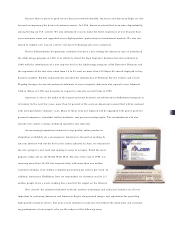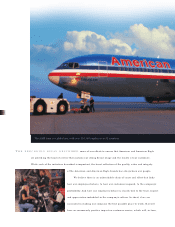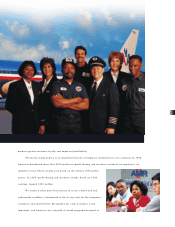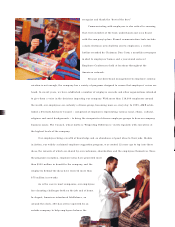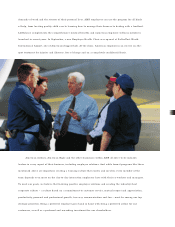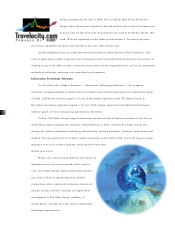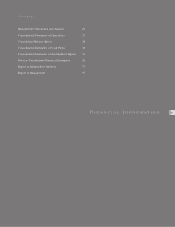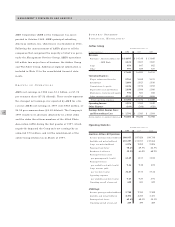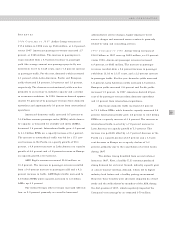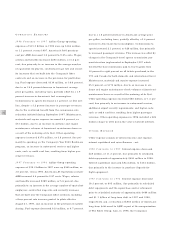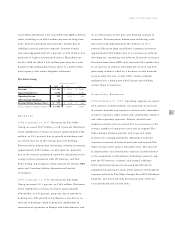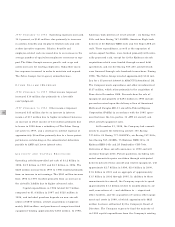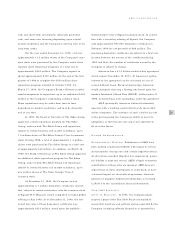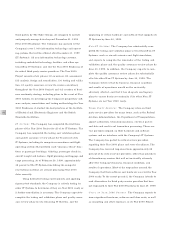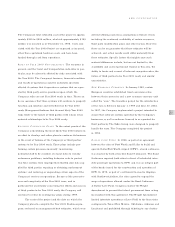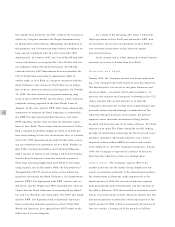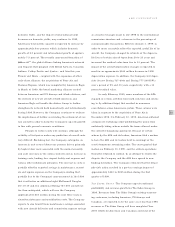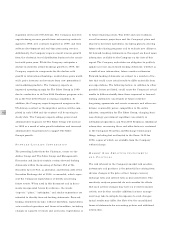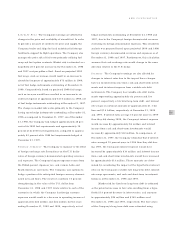American Airlines 1998 Annual Report Download - page 27
Download and view the complete annual report
Please find page 27 of the 1998 American Airlines annual report below. You can navigate through the pages in the report by either clicking on the pages listed below, or by using the keyword search tool below to find specific information within the annual report.
25
AMR CORPORATION
REVENUES
1998 COMPARED TO 1997 Airline Group revenues of
$17.4 billion in 1998 were up $546 million, or 3.2 percent,
versus 1997. American’s passenger revenues increased 2.7
percent, or $385 million. The increase in passenger rev-
enues resulted from a 0.9 percent increase in passenger
yield (the average amount one passenger pays to fly one
mile) from 13.37 to 13.49 cents, and a 1.8 percent increase
in passenger traffic. For the year, domestic yields increased
3.1 percent, while Latin American, Pacific and European
yields decreased 5.8 percent, 3.9 percent and 1.0 percent,
respectively. The decrease in international yields was due
primarily to an increase in industry capacity and a decline
in economic conditions. In 1998, American derived approx-
imately 70 percent of its passenger revenues from domestic
operations and approximately 30 percent from international
operations.
American’s domestic traffic increased 0.7 percent to
74.9 billion revenue passenger miles (RPMs), while domes-
tic capacity, as measured by available seat miles (ASMs),
decreased 1.4 percent. International traffic grew 4.3 percent
to 34.1 billion RPMs on a capacity increase of 6.4 percent.
The increase in international traffic was led by a 17.1 per-
cent increase in the Pacific on capacity growth of 29.3
percent, a 4.9 percent increase in Latin America on capacity
growth of 6.6 percent and a 1.8 percent increase in Europe
on capacity growth of 2.7 percent.
AMR Eagle’s revenues increased $104 million, or
10.2 percent. The increase in passenger revenues resulted
from a 0.9 percent increase in passenger yield and a 9.2
percent increase in traffic. AMR Eagle’s traffic increased to
2.8 billion RPMs while capacity increased to 4.5 billion
ASMs, up 6.0 percent.
The Airline Group’s other revenues increased $88 mil-
lion, or 9.9 percent, primarily as a result of increased
administrative service charges, higher employee travel
service charges and increased service contracts, primarily
related to ramp and consulting services.
1997 COMPARED TO 1996 Airline Group revenues of
$16.9 billion in 1997 were up $692 million, or 4.3 percent,
versus 1996. American’s passenger revenues increased
4.9 percent, or $665 million. The increase in passenger
revenues resulted from a 2.6 percent increase in passenger
yield from 13.03 to 13.37 cents, and a 2.2 percent increase
in passenger traffic. For the year, domestic yields increased
1.8 percent, Latin American yields increased 4.5 percent,
European yields increased 3.8 percent and Pacific yields
increased 1.0 percent. In 1997, American derived 69 per-
cent of its passenger revenues from domestic operations
and 31 percent from international operations.
American’s domestic traffic increased 2.0 percent
to 74.3 billion RPMs, while domestic capacity increased 0.8
percent. International traffic grew 2.6 percent to 32.7 billion
RPMs on a capacity increase of 0.4 percent. The increase in
international traffic was led by a 7.2 percent increase in
Latin America on capacity growth of 5.5 percent. This
increase was partially offset by a 1.7 percent decrease in the
Pacific on a capacity decline of 2.9 percent and a 1.5 per-
cent decrease in Europe on a capacity decline of 5.3
percent, primarily due to the cancellation of several routes
during 1997.
The Airline Group benefited from several external
factors in 1997. First, a healthy U.S. economy produced
strong demand for air travel. Second, industry capacity grew
at a more modest rate than demand, which led to higher
industry load factors and a healthy pricing environment.
However, these benefits were adversely impacted by a brief
strike and the strike threat by members of the APA during
the first quarter of 1997, which negatively impacted the
Company’s net earnings by an estimated $70 million.


